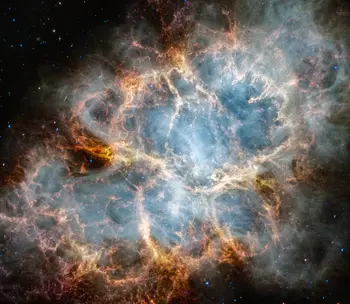Neutron Stars
Neutron Stars
Neutron stars
A neutron star is an extremely dense star with a mass of 1-2 solar masses and a radius of only 10-20 km. There is generally an upper limit to the mass, but a rapidly rotating neutron star can be heavier than a slowly rotating one. The rotation deforms it somewhat, increasing its circumference at the equator. The rotation also leads to a moment of inertia I and a so-called quadrupole moment Q. There are important relationships between the moments of inertia, the quadrupole moments and Love's numbers, which describe the deformability of the neutron star. These relations are called: I-Love-Q.
Latest developments
Colliding neutron stars emit gravitational waves. The first detection was made in 2017 by LIGO/Virgo(Phys. Rev. Lett. 119, 161101).
If you are interested in writing a thesis in this or a similar field, please contact Prof Dr Jutta Kunz or Dr Burkhard Kleihaus,
Crab Nebula

At the centre of the Crab Nebula is a pulsar that rotates 30 times per second. It is a neutron star that is as massive as the Sun, but only the size of a small city. (Image credit: NASA/STScI)
